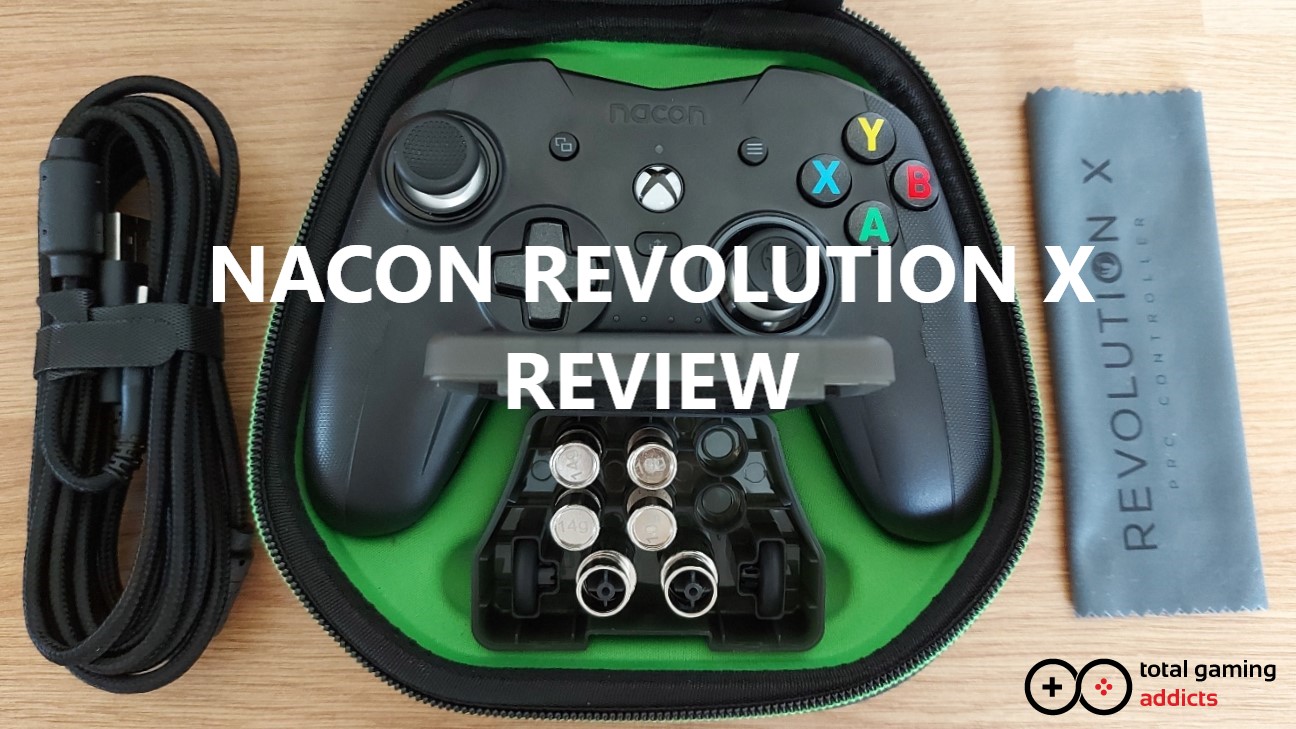The Revolution X is an outstanding controller, with professional features at an attainable price
- Manufacturer: Nacon
- Model: Revolution X
- Supported Platforms: Xbox One, Series X|S, PC
- Price when reviewed: £89.99 MSRP
- Release date: 2021
- Supplied by: Nacon
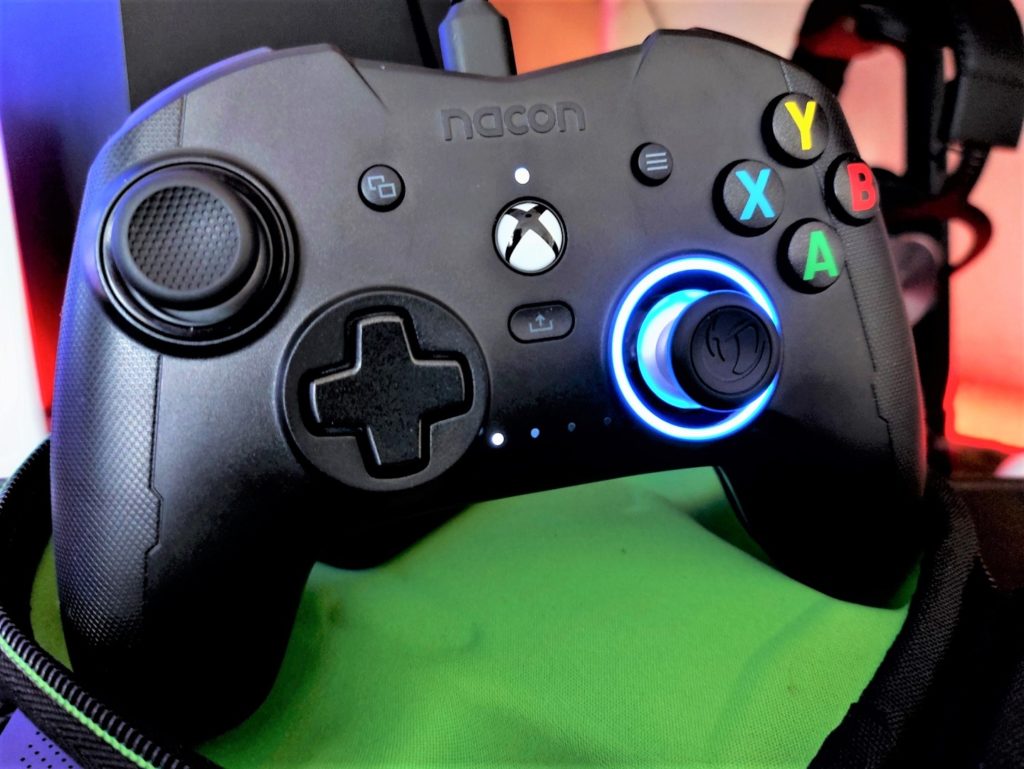
Nacon Revolution X Review
Nacon has been making PlayStation compatible versions of the Revolution controllers for several years, and they have been praised by critics and consumers alike for the solid build quality, excellent functionality and reasonable pricing. The Revolution X marks the first time the Revolution sub-brand comes to Xbox, though Nacon has released some quality Xbox controllers recently in the shape of the Nacon Pro Compact (a high-quality budget controller) and Nacon MG-X, both of which I still use to this day.
The Revolution X is designed for competitive gaming, with a feature set including additional assignable buttons at the rear, RGB lighting and customisable software to adjust almost every facet of its operation. Available for just £89.99 from Argos (UK), it’s a very appealing alternative to the likes of the official Xbox Elite controllers, and comparable to the Razer Wolverine V2 controller.
Revolution X – Design and build quality
What’s in the box?
- Controller
- Fabric coated hard case
- 3-metre braided USB-C to USB-A cable
- 2* 10g/14g/16g weights
- Stick surrounds
- Thumb caps
- Revolution X branded cleaning cloth
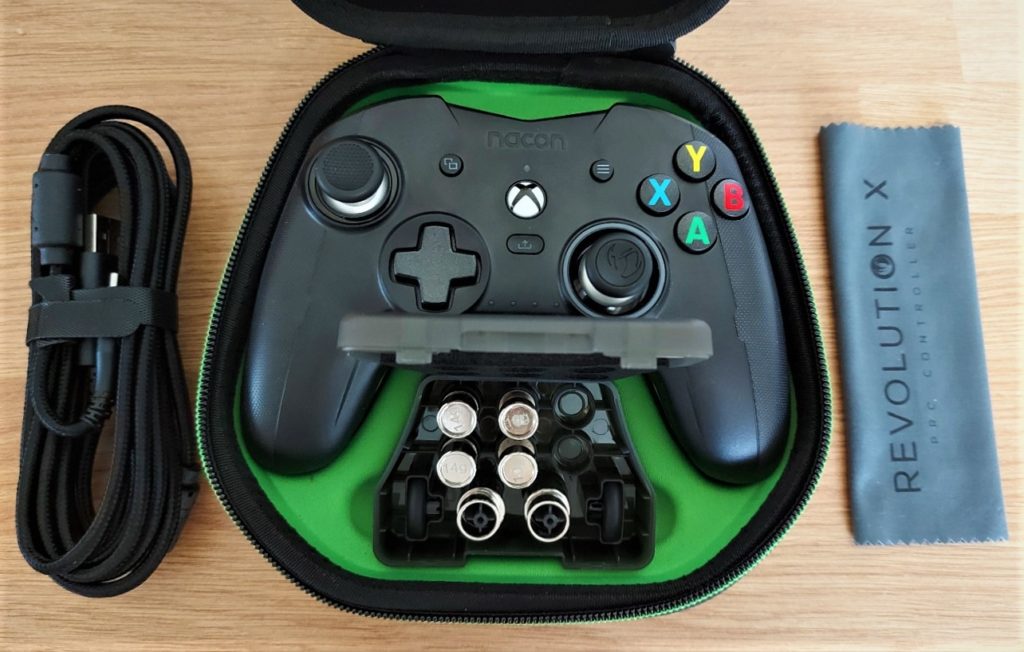
Nacon’s presentation is impeccable; the Revolution X comes in a tough protective case that contains the controller, a small box with the additional weights and thumbstick caps, a netted holder for the detachable USB cable and the soft cloth. I like the bright-green velvety feeling fabric they have used to line the inside of the box.
The controller itself is very appealing, similar enough to the official controllers to look familiar but with enough defining features to allow it to stand out. Mostly black with silver accents, where the official controllers are all about smoothness and rounded edges, the Revolution X has sharp and angular features.
The aggressively shaped handgrips have great ergonomics, naturally positioning your fingers in reach of the rear-mounted S buttons. If you’ve only used the official controllers before the shaping can feel a little unusual at first; the lower section of the handgrips has quite a bulbous feel, whilst the recess where your middle finger rests is quite deep. I love the textured grips that wrap around from the rear to the front of the controller, giving the Revolution X an exceptionally grippy feel.


The rear cover of the handgrips slides off, revealing the slots for adding the additional weights. Rather than having magnetic attachments as you’d find on the Meta Quest 2 controllers, these simply snap into place. They stayed tightly attached during use, though, and it’s unlikely you’ll be opening them up much once you’ve chosen your preferred additional weights.
The button layout is very similar to official controllers, only the Nexus button is lower, and a bit smaller. The face buttons (A, B, X, Y) are larger and much more subtly curved, while the share button is now recessed into the shell.
A standout feature of the Revolution X is the RGB ring. You can assign a different colour for each profile, but if you prefer to use the same colour across profiles there is a bank of profile indicator lights for at a glance identification.
On the bottom of the controller, there is a centrally located 3.5mm combi-jack for headsets or headphones, but it lacks the proprietary connector used by chat pads or audio controllers. The Revolution X comes with a Dolby Atmos license, so missing this input was not much of an issue.
The Revolution X is all plastic, with the exception of the thumbstick shafts, but the build quality is top-notch, and the controller feels well manufactured and durable. I’m still using the Nacon Pro Compact which has no issues with stick drift or loss of button responsiveness after half a year.

Revolution X – Setup and customisation
Setup is simple plug and play, and if you don’t want to use the customisations it’s ready to go right out of the box. It uses a removable 3-metre long USB Type C to USB Type A cable (the Xbox doesn’t have a USB-C connection), but it does work with USB-C to USB-C if you are connecting to a PC, though you’d need your own cable for this. I successfully tested the Revolution X with a variety of different cables.
Having this flexibility is important as if you’re like me and play on a monitor at a desk, you probably don’t want metres of cable lying underfoot. Similarly, if you have a large room and need a longer cable, I used a 5-metre cable which worked perfectly. I do wish there was a wireless option for more relaxed gameplay, but this is an esports focused controller where every millisecond of latency counts, so only being wired makes sense in this context. I’d gladly pay a bit extra for a Revolution X Unlimited with 2.4GHz wireless and/or Bluetooth, though.
Physical customisations
As mentioned, the Revolution X comes with a selection of additional weights you can slot into the handgrips. The controller is quite light already, especially as it doesn’t need batteries, so I found the heavier 16g weights were best for my preference, though it still feels light compared to the Elite – The Revolution X weighs 264g including both 16g weights, compared to the 368g Elite (with paddles, faceted D-pad and elongated sticks fitted).
Additionally, there are a set of thumbstick shaft restrictors that reduce the travel of the thumbsticks, which is designed to allow you to make movements faster. However, without any kind of real-time indication of stick position within the App, it’s very difficult to accurately set the outside deadzones. If you intend to use them a lot it’s probably worthwhile fine tuning these – adding the restrictor to the left stick is definitely advantageous in fast-paced shooters so you can make rapid movement changes.
Finally, you also get an additional set of thumbstick caps. They fit firmly to shafts, but they are not magnetic and take a firm pull to remove. The concave caps feel nice, with a smooth but grippy rubber finish, whilst the convex caps add slightly more height. I would have liked to see more options here, such as an elongated stick to allow more accurate control.
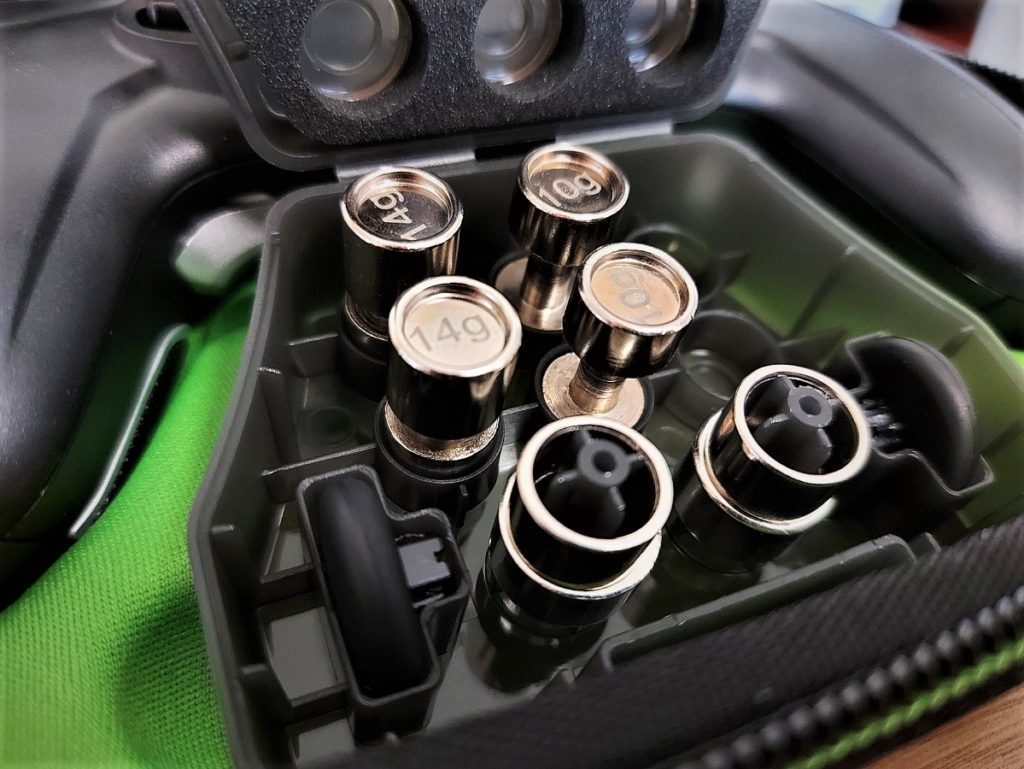
Software customisation
The Revolution X has four adjustable and assignable profiles. There are presets available, but these cannot directly be adjusted. You can, however, make a copy of the presets and adjust them to your preference. Once created, up to four profiles can be saved to the controller for quick-switching when in advanced mode.
The four S buttons at the rear of the controller are fully assignable and can even be configured without going into the software. Deadzones, stick response curves and vibration levels can all be adjusted per profile, with sufficient incremental steps allowing accurate fine-tuning to suit your playstyle.
Surrounding the right stick is a customisable RGB ring. It has four assignable zones, but I found these aren’t clearly separated, allowing light to bleed through between zones. There are a few modes to play around with, however, I preferred running a static colour for each profile, for at a glance recognition. Brightness can be adjusted, which is useful, as the default level can be glaringly bright when gaming in the evening.
Nacon ships the Revolution X with a Dolby Atmos license, but this is only available while the controller is connected. Much like the controller settings, there are multiple audio eq settings and presets, along with mic gain adjustment and surprisingly effective noise suppression.
Handily, both controller configuration and audio eq settings are linked within the profiles. You can create an FPS setup with audio tweaked to highlight footsteps and gunfire, and keep a more traditional response curve setup with audio enhanced for cinematic adventure games on another profile.
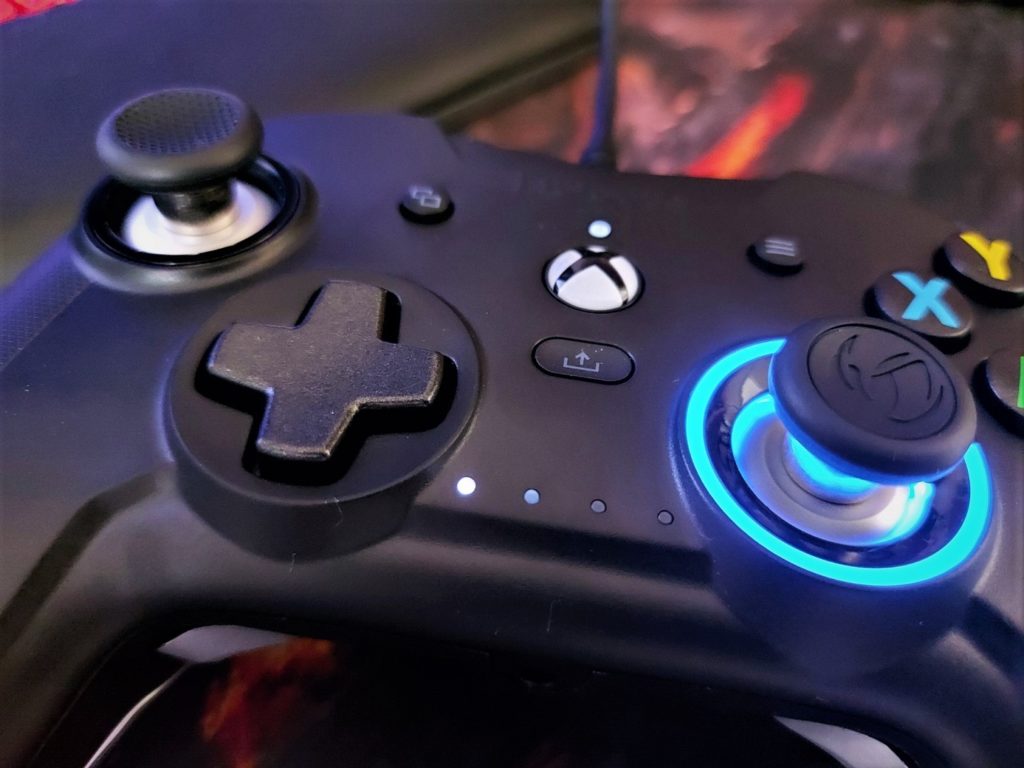
Revolution X – Performance
Nacon has improved the D-pad on the Revolution X, but it’s ever so slightly spongy, not clicky and tactile like official pads. That being said, it is responsive and I had no problems with it in regular use. If you like to use the D-pad for fighting games, it can be switched between four and eight-way input, but I couldn’t really notice much difference.
One of the main features that elevate the Revolution X above a standard controller is the S buttons. The upper S buttons are brilliant; they are large, well-positioned and easy to use. The lower ones are quite stiff and tricky to use in the heat of battle, but at least this prevents mispresses which I experienced with the paddles on the Elite controllers. I far prefer Nacon’s implementation, these buttons are much better than paddles. I actually removed the paddles on my Elite as I found I had to hold the controller unnaturally to use them, but with the Revolution X I can hold it normally (and rest the controller on my knee without pressing random buttons!)
If you’ve never tried a controller with additional buttons before, you will be pleasantly surprised. In first-person shooters, for example, they allow you to keep both thumbs on the sticks whilst still being able to jump, reload, activate switches or melee opponents. This is obviously a huge advantage, as you can track enemies and keep full manoeuvrability mid-game. Another example is that I take a lot of screenshots for reviews. Assigning the share button to one of the S buttons makes it much easier to capture in-action screen grabs without having to stretch my thumb across to the share button and potentially ruin the shot.
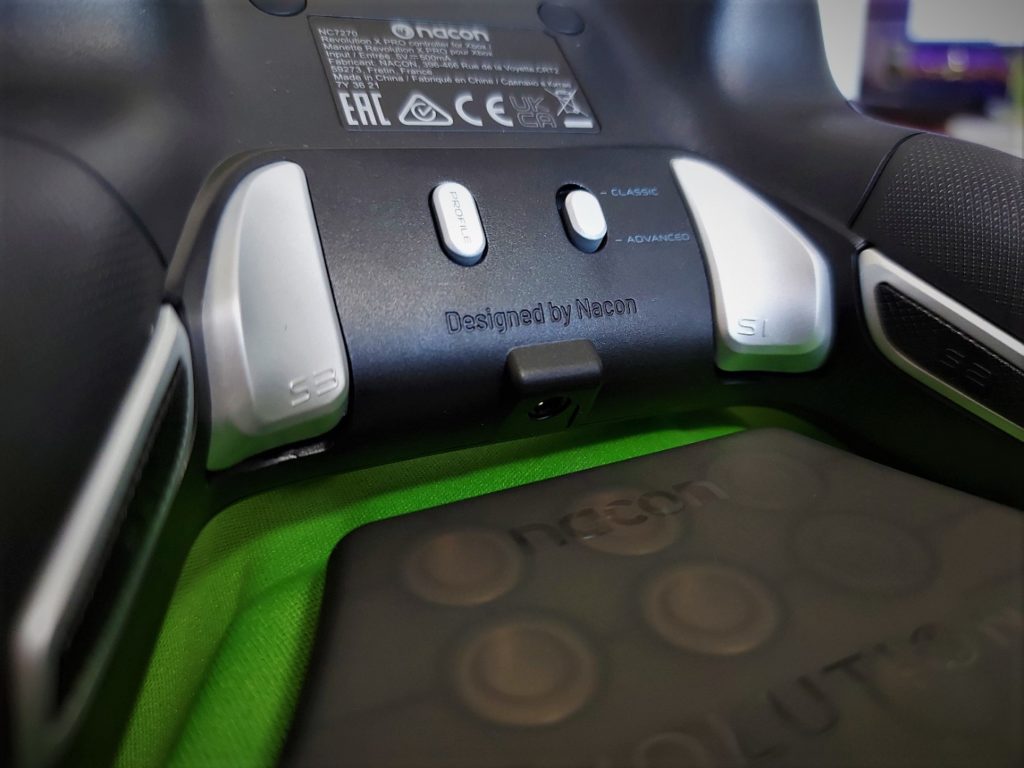
The triggers are smooth in operation, the resistance is well-judged and with a slightly shorter throw than a regular controller. I love the textured finish on the Xbox Series pad triggers, but even though these are smoother they still give a good grip. The resistance is consistent across the full range of travel, which I found very helpful when feathering the throttle and brake on Forza Horizon 5.
The face buttons are located perfectly and are significantly larger and flatter than usual. If you’re used to the official controllers, you’ll be happy to know there’s little to no learning curve adapting to the regular controls. Like the face buttons, the bumpers are also oversized, as well as being satisfyingly clicky. They sit flush with the top of the triggers, which makes them easy to hit, too.
The analogue sticks are excellent, with a tight feel and solid centring. I noticed they have a very faint click when they move away from a centred position, which I really like. Not only will this be a good early indicator if stick drift rears its ugly head, but it also gives subtle tactile feedback that is helpful when making minute adjustments. Finally, the left and right stick buttons work perfectly, feeling almost identical to an official controller.
Overall, the Revolution X feels very similar to the Elite controller in use, which is high praise indeed, as that is one of my favourite controllers. However, the S buttons on the Revolution X are much better than the paddles on the Elite. Functionally it’s not massively different to regular controllers, and most gamers will be able to pick one up and enjoy using it immediately. It’s when you get to the S buttons and fine-tunable customisation that the Revolution X comes into its own.
I’ve already mentioned I would have liked wireless connectivity, and having trigger locks and adjustable stick tensioners would be desirable, but that’s just nitpicking now and would surely push the price well above the £100 mark and probably closer to the very expensive Elite 2.
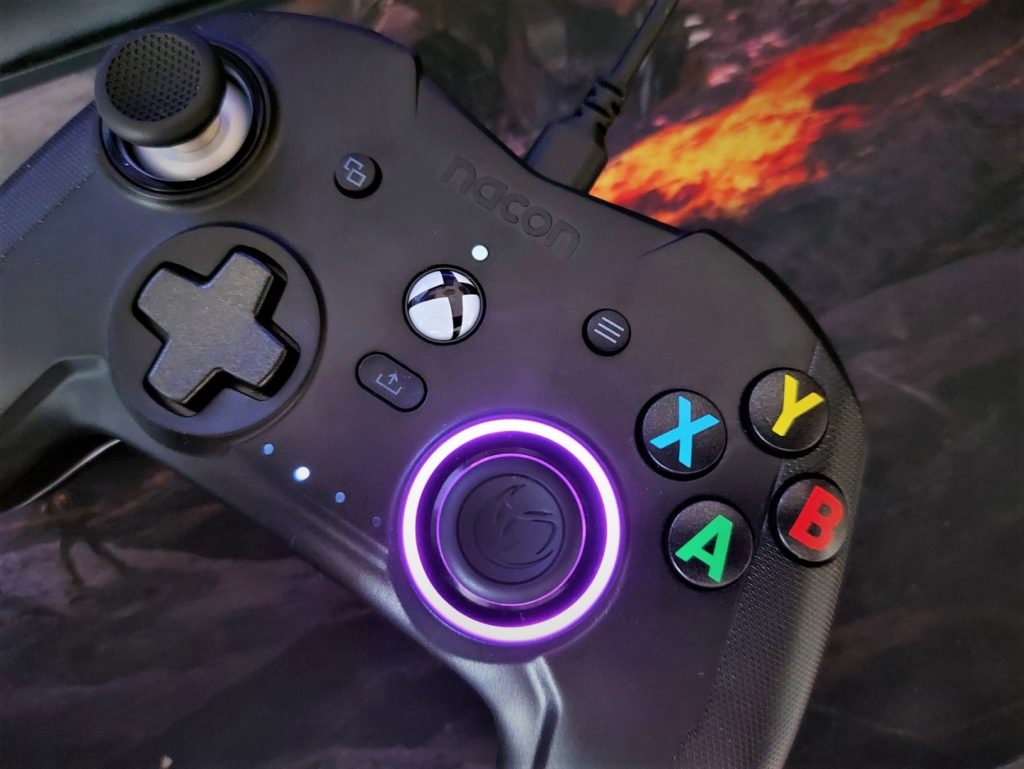
Pricing and availability
The Revolution X can be picked up for £89.99 at Argos (in the UK) and is widely available. It’s much more affordable than the Elite controller but offeris similar levels of performance. It’s definitely worth the cost if you are into competitive gaming, but if you aren’t going to use the S buttons or are a casual gamer, it could be argued that the excellent Series X|S controllers are more than good enough. If, however, you are looking for an affordable pro-level controller, this is a great option that won’t break the bank.
Summary
Nacon’s Revolution X is a fantastic controller with pro-level features at an attainable price. The additional S buttons offer a genuine advantage, though the lower buttons could be made easier to operate. With a solid suite of customisation options, assignable RGB and an easy to use app, the Revolution X is a powerful and user-friendly controller that can make a real difference in the quality of your gameplay.
Although some may lament the lack of wireless connectivity, the responsiveness through its wired connection is superb. It may be missing some of the adjustments found on the (nearly twice as expensive) Xbox Elite controllers, but it’s a very well specced and solidly built controller that should last you for years.
